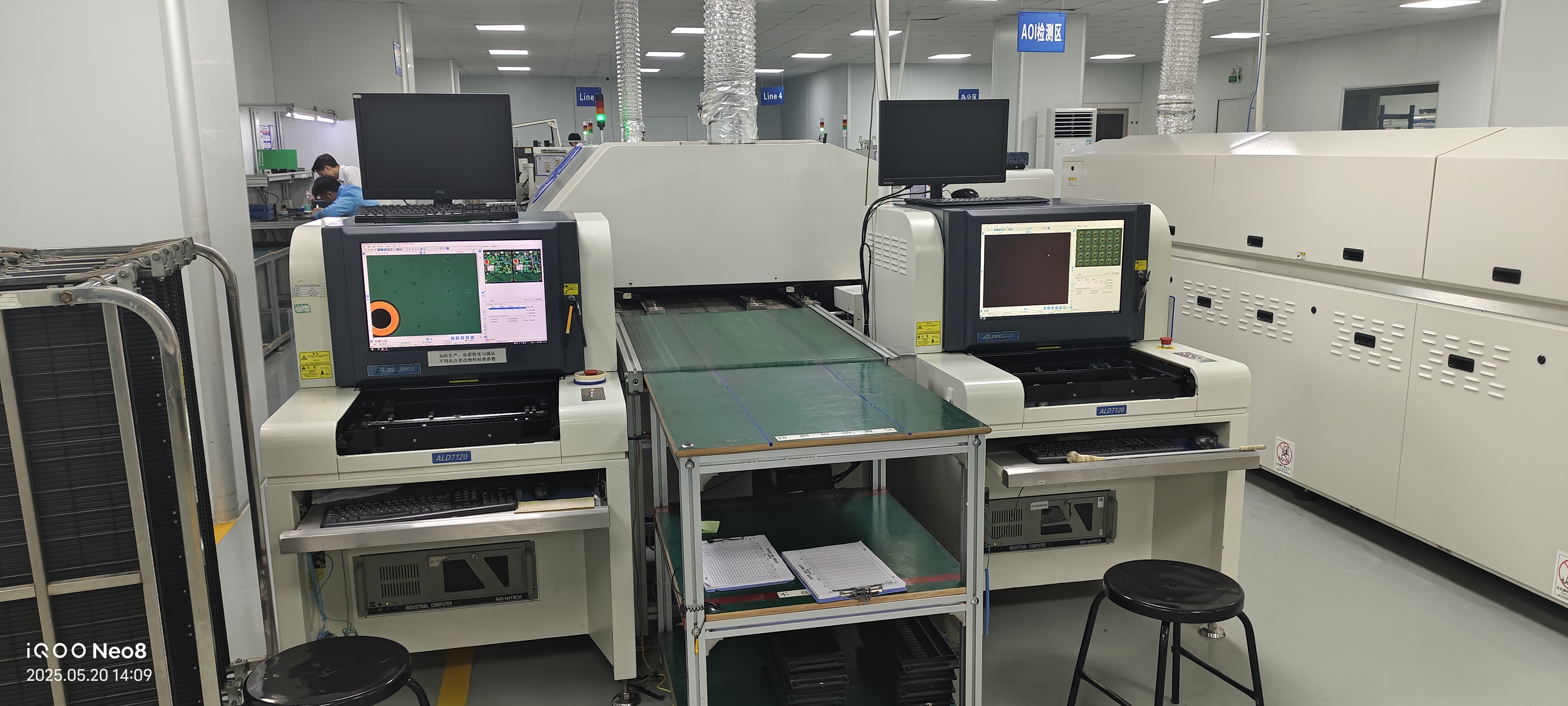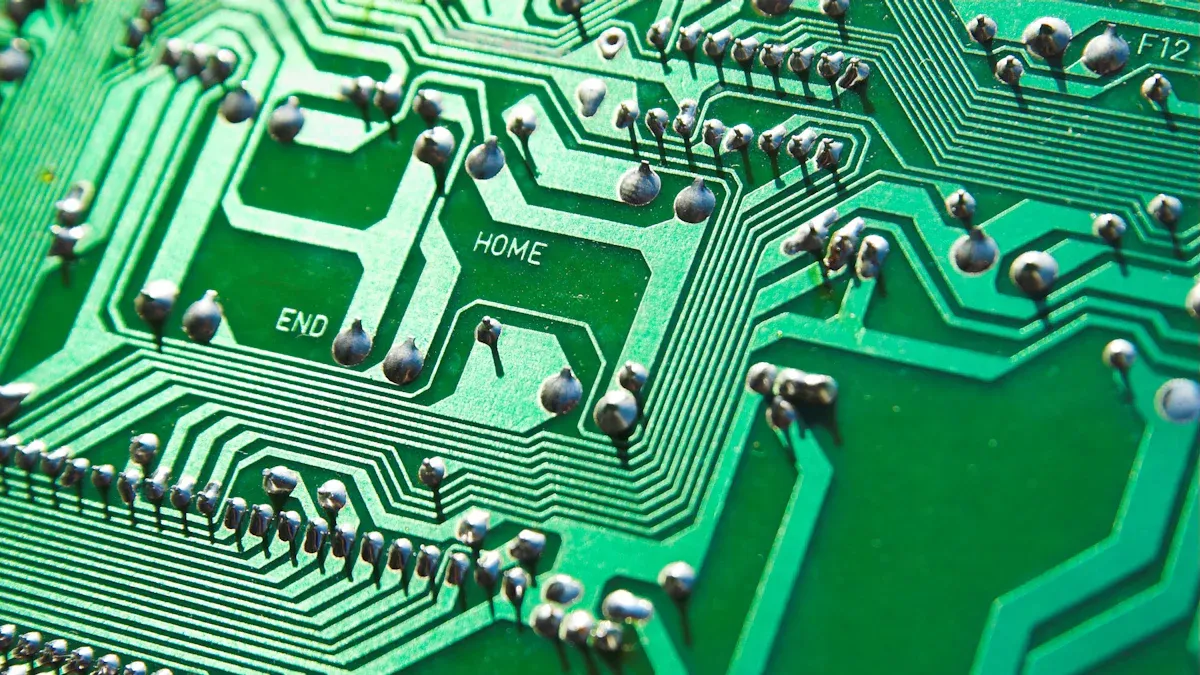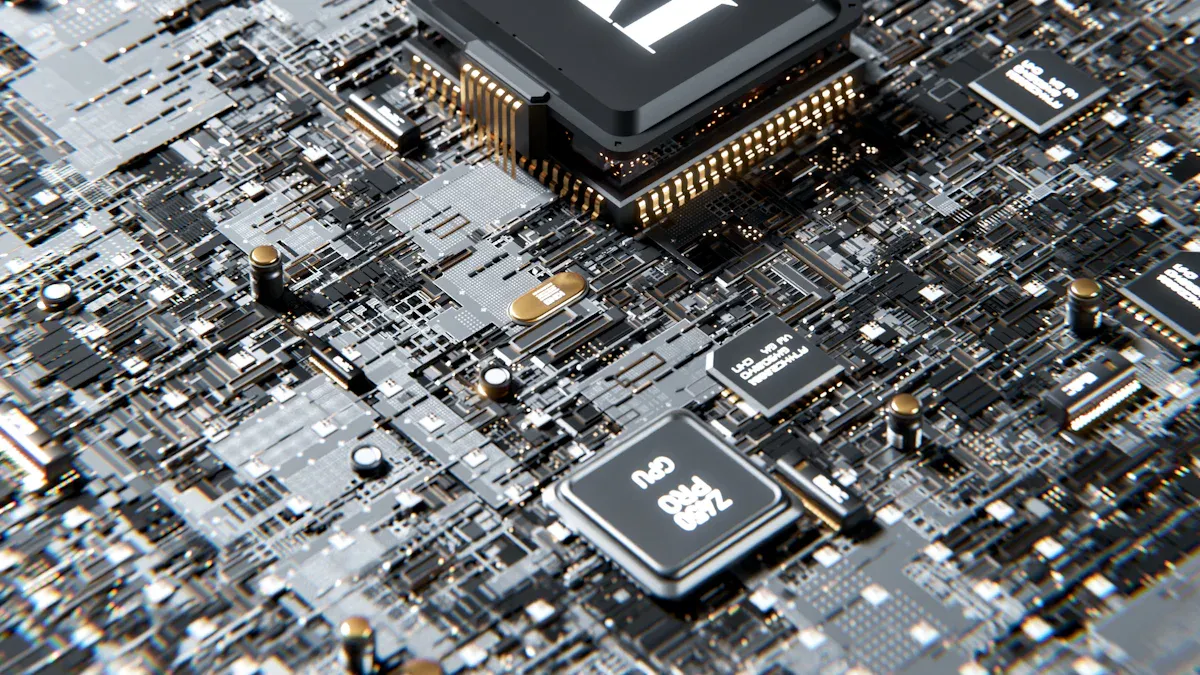Why AOI is Crucial for Quality Control in PCBA Manufacturing

In PCBA manufacturing, achieving flawless products requires robust quality checks. AOI inspection plays a crucial role by identifying errors early and maintaining high standards. These advanced systems utilize intelligent 3D imaging and machine learning to reduce mistakes by 65%, enhancing product reliability and lowering repair costs. AOI systems serve as essential safeguards in SMT production lines, minimizing rework and product recalls, which significantly cuts expenses for companies. Early adopters of these systems experienced a 10% boost in productivity, highlighting their transformative impact on modern assembly processes.
Key Takeaways
Automated Optical Inspection (AOI) helps find mistakes in PCBA making. It makes products more reliable and cuts down repair costs.
Using AOI systems can make work faster by 10% and checks better by 40%. This means quicker production and better quality.
AOI gives instant feedback, so fixes can be made right away. This reduces waste and keeps production steady.
Understanding AOI Inspection in PCBA Manufacturing

What is Automated Optical Inspection (AOI)
Automated Optical Inspection (AOI) is a key tool for checking PCBs. It uses cameras to spot problems like scratches, stains, or broken circuits. AOI compares board images to a perfect example called the 'golden board.' This helps find mistakes quickly and easily. Special software creates a profile of the board to make inspections better. This ensures any issues are caught during the process.
Key Technologies Behind AOI Systems
AOI systems use advanced technology to work better and faster. Artificial intelligence (AI) and machine learning (ML) help find defects and patterns more accurately. These tools make AOI systems smarter and more reliable. The Internet of Things (IoT) adds data insights to improve production and cut costs. These upgrades keep AOI systems as leaders in quality control.
Technological Advancement | Description |
|---|---|
Helps find defects and patterns faster and better. | |
Integration with ML | Predicts problems early, making it useful for many industries. |
IoT Integration | Uses data to improve production and save money. |
How AOI Works in PCB Assembly Inspection
AOI systems are important for keeping PCB quality high. They scan boards to find problems early, saving time and materials. Early detection lowers costs and reduces waste. AOI gives instant feedback, so fixes can happen right away. This keeps production smooth and improves results. By collecting data, AOI helps improve processes over time. This creates a system that gets better with each inspection.
Efficiency Type | Description |
|---|---|
Reduced Labor Costs | Machines do the work, so fewer workers are needed. |
Finds problems early, saving money and materials. | |
Improved Yield Rates | Ensures good-quality boards at every step of production. |
Real-Time Quality Control | Spots issues fast, so they can be fixed without stopping work. |
Data Collection and Analysis | Gathers data to find trends and make processes better. |
Faster Turnaround Times | Works nonstop to meet deadlines without lowering quality. |
Benefits of AOI for Quality Control in SMT and PCBA

Enhanced Defect Detection and Prevention
AOI helps find problems in SMT and PCBA processes. It ensures products are made with high quality. Using 2D AOI and 3D AOI, many issues can be spotted. 2D AOI uses one-angle imaging to find surface flaws. 3D AOI uses multi-angle imaging to measure height and detect harder problems. These tools are very useful for modern PCB manufacturing.
Feature/Technology | Description |
|---|---|
2D AOI | Single-angle imaging for surface-level defect detection. |
3D AOI | Multi-angle imaging for height and complex flaw detection. |
Defect Types Detected | Finds flaws in components, solder joints, PCBs, and markings. |
False Call Reduction | Better lighting and system training reduce wrong defect alerts. |
Advanced Imaging | High-quality cameras and smart software improve accuracy. |
Combining AOI with Six Sigma methods stops more defects. This mix ensures fewer bad parts and better measurements. Modern AOI systems work fast and meet the needs of today's PCBA production. They help keep quality steady and reduce fixing mistakes.
Improved Efficiency and Production Throughput
AOI speeds up production by automating inspections. It works faster and more accurately than manual checks. This reduces human mistakes and lowers defective rates.
AOI finds and fixes problems quickly, improving efficiency.
It makes products better, saving time and cutting costs.
Faster inspections help meet deadlines without lowering quality.
Improvement Type | Percentage |
|---|---|
Increase in Productivity | 15% |
Improvement in Inspection Efficiency | 40% |
Reduction in Rework Rate | 25% |
AOI creates smoother production, less waste, and happier customers. These changes lead to better results, like higher yields and lower costs.
Reliability Compared to Manual Inspection
AOI is better than manual checks in speed and accuracy. People can miss small problems due to tiredness or bias. AOI gives consistent and repeatable results every time. This ensures all PCBs meet strict quality rules.
"Research shows AOI reduces human mistakes, boosts productivity, and saves money. Its steady results make it the best choice for quality control in SMT and PCBA."
AOI also gives instant feedback, so problems can be fixed right away. This keeps production moving without delays. Adding AOI to your process improves customer satisfaction and saves money over time.
LTPCBA’s Role in Modern PCB Assembly Inspection
AOI as a Quality Gate in SMT and PCBA Production Lines
LTPCBA uses advanced AOI systems to check quality in production lines. These systems find problems early, ensuring every PCB meets high standards. With AI-powered tools, LTPCBA improves accuracy and reduces false alarms.
Metric | Description | Value/Improvement |
|---|---|---|
False Positive Rate | Fewer wrong alerts compared to older systems | |
Detection Accuracy | AI tools find real defects more reliably | |
Yield Improvement | Better product output with AI-enhanced AOI | ~98.5% vs. ~98.2% |
Throughput | Faster inspections with AI upgrades | Increased by ~15% on average |
This system reduces rework and keeps products reliable. For example, one company cut defects from 7,000 ppm to 700 ppm in two months, showing how AOI improves production.
AOI for Process Control and Continuous Improvement
LTPCBA uses AOI not just for finding defects but also for improving processes. Real-time checks allow quick fixes to keep production running smoothly. This approach saves time and boosts efficiency.
60% Faster Inspections: Speeds up production and saves time.
99% Accurate Checks: Finds errors less often, improving quality.
Instant Feedback: Helps adjust processes right away.
Flexible Settings: Keeps quality steady across all batches.
By studying data, LTPCBA improves production speed, output, and product quality.
Metric | Description |
|---|---|
Cycle Time | Time taken to complete one production process. |
Throughput | Amount of products made in a set time. |
Yield Rate | Percentage of good-quality products produced. |
Defect Rate | How often mistakes happen during production. |
Equipment Utilization | How much machines are used compared to their capacity. |
Supporting Industry 4.0 with Advanced AOI Systems
LTPCBA’s AOI systems support smart manufacturing ideas from Industry 4.0. These systems connect to IoT devices and cloud platforms for real-time data and maintenance. This helps meet industry rules and improves production.
Experts predict industrial robots will grow by 12% yearly, reaching 5.6 million units by 2024. This rise in automation shows why AOI is key to reducing human mistakes. LTPCBA’s advanced systems use 3D imaging and AI to find flaws like solder issues and misalignments with great accuracy.
By using AOI, LTPCBA helps factories work smarter, making production faster and products more reliable.
AOI inspection is very important for making good PCBs. It uses machines to find mistakes, which lowers human errors. LTPCBA uses smart AOI systems to make production faster and meet today’s standards. While AOI costs a lot at first, it saves money later by fixing problems early and speeding up work.
Benefit | Description |
|---|---|
Better Quality Checks | Machines find mistakes, making inspections more accurate and reliable. |
Fewer Production Mistakes | Early problem spotting helps fix issues quickly, saving time and materials. |
Faster Production Speeds | AOI works fast, helping factories meet big orders on time. |
High starting costs pay off by lowering waste and improving results. |
Adding AOI to your PCB process keeps quality steady and costs low. LTPCBA’s AOI systems help factories follow strict rules and make great products. This makes LTPCBA a trusted partner for modern PCB manufacturing.
FAQ
What does AOI do in PCBA manufacturing?
AOI helps make high-quality products by finding problems early. It saves time, reduces waste, and keeps production standards steady.
How is AOI better than manual inspection?
AOI works faster and finds mistakes more accurately than people. It avoids human errors, gives instant updates, and spots defects reliably.
Can AOI handle different PCB designs?
Yes, AOI uses smart software to adjust for different PCB types. This makes sure inspections are accurate for all kinds of designs.
See Also
Understanding PCBA Processing Needs for Medical Devices
Importance of SPI Inspection Post-SMT in PCBA Production
Defining PCBA and Its Essential Components
